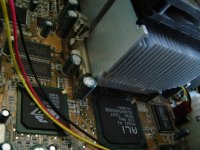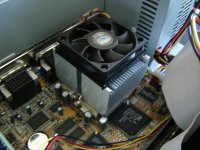I doubt it, but do these exist? I'd like to use my own cards for these things but feel silly making a redundant system. Just thought I'd ask.
Edit: Oh and before anybody questions the relevance of Super Socket 7 in a P1 forum, I use them with P1 chips to attain higher clocks using the high bus speeds.
Edit: Oh and before anybody questions the relevance of Super Socket 7 in a P1 forum, I use them with P1 chips to attain higher clocks using the high bus speeds.




